11 Rare Jeep Models That Defined Off-Road History
Jeep has been at the forefront of off-road vehicles for decades, and many rare models have played a significant role in shaping its legacy. Known for their toughness and reliability, these Jeep models have earned respect from off-road enthusiasts around the world. Each rare Jeep brings something unique to the table, whether it’s a distinctive design or innovative features. As the brand continues to push the limits of off-road performance, these legendary models stand as testaments to Jeep’s enduring influence.
This post may contain affiliate links, which helps keep this content free. Please read our disclosure for more info.
1967-1973 Jeepster Commando
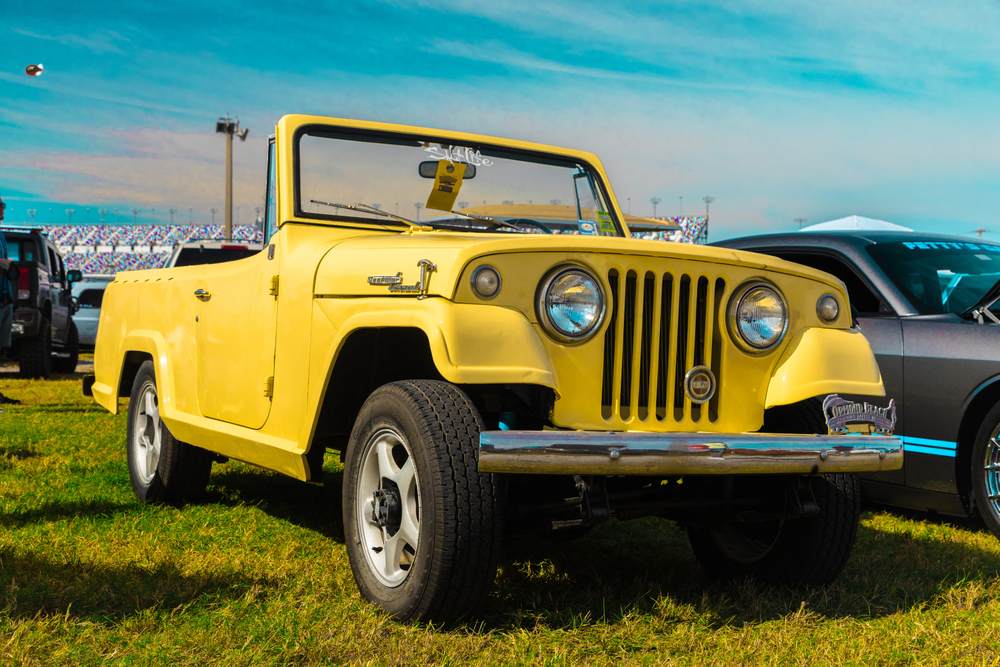
Originally introduced in 1967 by Kaiser Jeep and later by AMC, the Jeepster Commando was a compact off-road vehicle offered in roadster, wagon and pickup forms. It stands out because production was limited and the styling mixed Jeep heritage with more civilian vehicle cues, making it less common today. A well-preserved model can fetch roughly $30,000 to $50,000 in the U.S., though rare variants may go higher. Many examples were modified or used heavily, so ones retaining original drivetrain or bodywork are particularly prized. It symbolizes a transition era for Jeep from utility to leisure four-wheel drive.
When considering ownership, key details include verifying the correct wheelbase (101″ vs 104″ for later models), engine type (Hurricane I4 or Dauntless V6), and body style. Rust and lack of parts support can impact condition, especially for rare options. Collectors often look for minimal modification and original trim to preserve value. Because few are left unrestored and many have been cut up for customization, an intact example stands out. For someone who wants a unique Jeep with both history and rarity, the Commando delivers.
1986-1992 Jeep Comanche

Launched in model year 1986, the Comanche was Jeep’s compact pickup derived from the XJ Cherokee platform, offered in both RWD and 4WD and two bed lengths. It has gained rarity status because production was relatively low compared to other Jeeps and because the pickup market shifted away, meaning fewer survivors today. Market values for good condition examples are currently in the ballpark of $20,000 to $40,000, depending on drivetrain and originality. Differences like the six-foot vs seven-foot bed, manual vs automatic transmission, and 4WD vs 2WD matter significantly for collector interest. It captures an interesting moment when Jeep experimented with pickups instead of larger full-size trucks.
When evaluating one, examine the Uniframe boxed frame under the cargo bed, the bed condition, and the originality of engine and interior. Many have been modified for off-road use, which can reduce interest if someone is seeking a stock survivor. Availability of parts is decent because components share with Cherokee XJ, but low volume means rarer options urge caution. A clean, original Comanche with rare engine or 4WD box commands higher value. For off-road enthusiasts who prefer pickup form, the Comanche is a strong choice.
1981-1986 Jeep CJ-8 Scrambler
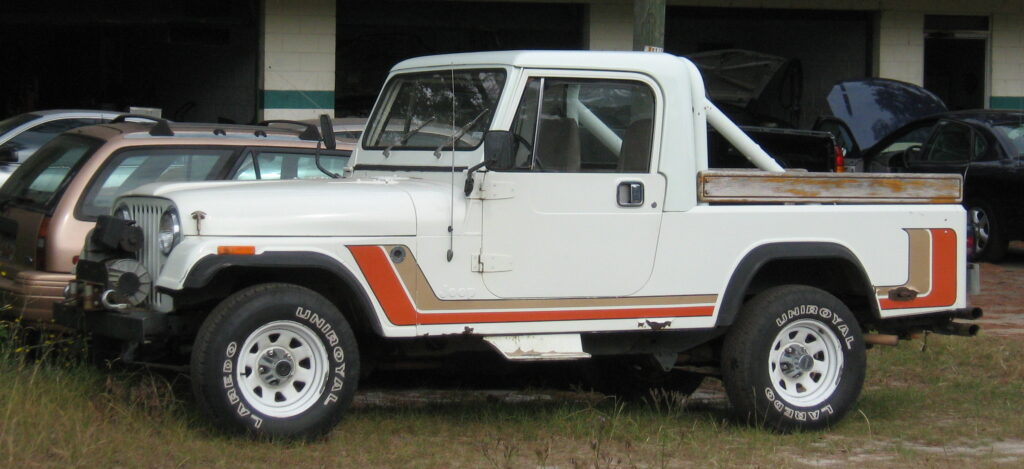
Introduced for the 1981 model year, the CJ-8 Scrambler was a longer-wheelbase variant of the CJ-7 with a 104″ wheelbase and offered a pickup bed. It’s rare because of limited production and because many were modified heavily, reducing numbers of unaltered examples. Typical value today ranges around $25,000 to $45,000, with best condition or rare engine versions going higher. The longer bed and civilian off-roader styling make it distinct among CJ models. Its ability to serve both as a trail rig and everyday vehicle gives it appeal in the Jeep collector community.
Key things to check include structural rust (especially frame under bed), originality of transfer case and axles (Dana), and interior trim. Because many were used off-road hard, finding one with minimal frame damage is a plus. Stock color combinations and original drivetrain help with value. While parts availability is reasonable given CJ-7 parts sharing, body panels specific to Scrambler bed are less common. For someone looking for a Jeep that stands out from regular CJ models, the Scrambler fits well.
1987-1995 Jeep Wrangler YJ

The Wrangler YJ was introduced for the 1987 model year and brought squared headlights and wider track compared to the CJ-7. It has become rare among collectors because many were heavily modified and used off-road, making clean, stock examples harder to find. Current values for well-kept Y Js might sit around $20,000 to $35,000 depending on condition, options and originality. The YJ marks a key transition for Jeep, blending modern amenities with off-road capability. Its significance in Jeep history adds collector appeal beyond pure rarity.
When shopping one, check for frame rust, especially under the rear seat and quarter panels, proper transfer case and axle ratios, and interior condition. Stock suspension and engine are often more desirable than heavily modified rigs if someone wants a collectable example. Factory option sheets and original paint colors add value. Because many YJs have been trail abused, finding one maintained and lightly used is a difference-maker. For a Jeep that represents a generation shift and still serves off-road well, the YJ remains relevant.
1963-1991 Jeep Wagoneer SJ
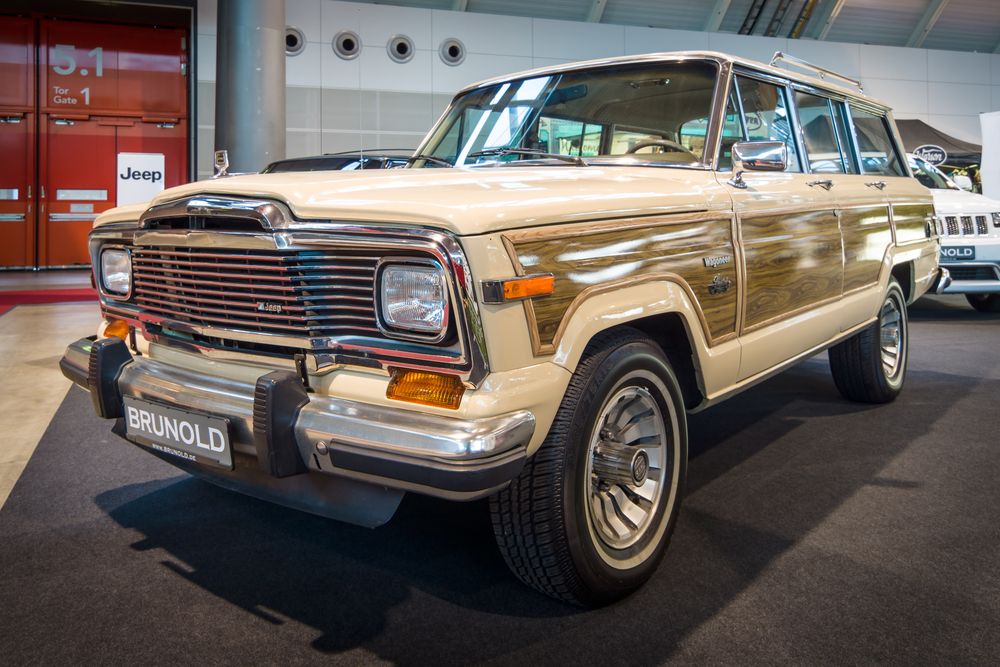
Launched in 1963 (for the 1964 model year) the Wagoneer SJ became one of the first luxury 4×4 sport-utility vehicles while maintaining true four-wheel-drive capability. Its rarity stems from few models surviving in good condition, especially earlier years with Super Wagoneer trim, woodgrain panels and rare drivetrains. A well-preserved example can command $40,000 to $80,000+ depending on year, drivetrain (for example the 360 V8 vs 401 V8), originality, and wood panel condition. The Wagoneer SJ represents a shift in 4×4 vehicles toward combining utility and comfort which helped shape off-road culture. Its long service life and iconic styling make it a favorite among collectors.
For those considering one, inspect the frame rails and floor or rockers for rust (common), verify originality of axles (Dana 44 front, etc), and check that the wood-panel siding has no delamination or excessive rust behind. Maintaining original interior trim and options like power windows or air conditioning enhances value. Because these trucks were often used in remote or utilitarian settings, many have been neglected, so a clean unit is special. For someone who wants a piece of 4×4 history that helped define the SUV segment, the Wagoneer SJ ticks the box.
2020 Jeep Wrangler Rubicon Launch Edition (JT Gladiator)
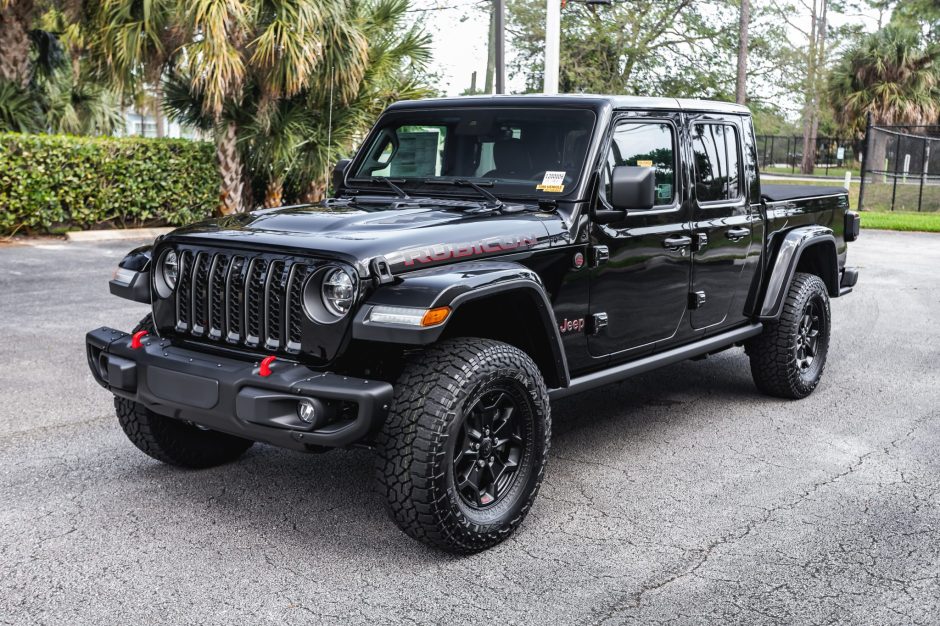
Released in 2020, the Jeep Gladiator (JT) Rubicon Launch Edition marked the revival of Jeep’s full-size pickup under the Gladiator name and was limited in production to about 4,190 units. The rarity comes from the limited-edition run, unique badging, and specific feature set tied to the launch. Market values for well-preserved examples often sit around $60,000 to $80,000+, especially if low-mileage and original. The combination of pickup bed, convertible top options, and Jeep off-road capability gives it strong collector interest. It represents Jeep’s modern off-road direction while referencing its heritage.
When assessing one of these, check that build number and trim match the limited-edition run, verify inclusions like unique wheels, badging, and special paint colors. Condition and mileage are key especially given recent production-low-use examples are more desirable. Maintaining the original hardware (stock suspension, tires) helps value retention. As trucks age out of daily use, these limited editions may become more sought after. For someone wanting a modern Jeep with limited production and collectibility, this model stands out.
1981-1986 Jeep CJ-8 Scrambler Golden Eagle

Produced during the CJ-8’s run, the Golden Eagle edition added special graphics, badging and rare option packages which reduce the number of survivors. The Golden Eagle badge and decals, along with optional AMC 258 or 304 engines, make this variant more collectible. Clean examples often command $30,000 to $45,000, with rare engine and original condition units going higher. Its combination of pickup bed, off-road capability and special edition status give it appeal among Jeep enthusiasts. The Golden Eagle styling ties to Jeep’s performance image.
Buyers should check if the Golden Eagle graphics and badging are original, verify panel condition (especially bedsides and frame), and confirm the original drivetrain. Because special edition models were often modified, originality adds value. Bed condition, rust on frame rails and correct parts matter. For a rare variant of an already rare model, the CJ-8 Golden Eagle is meaningful in Jeep collector circles.
1941-1945 Jeep Willys MB
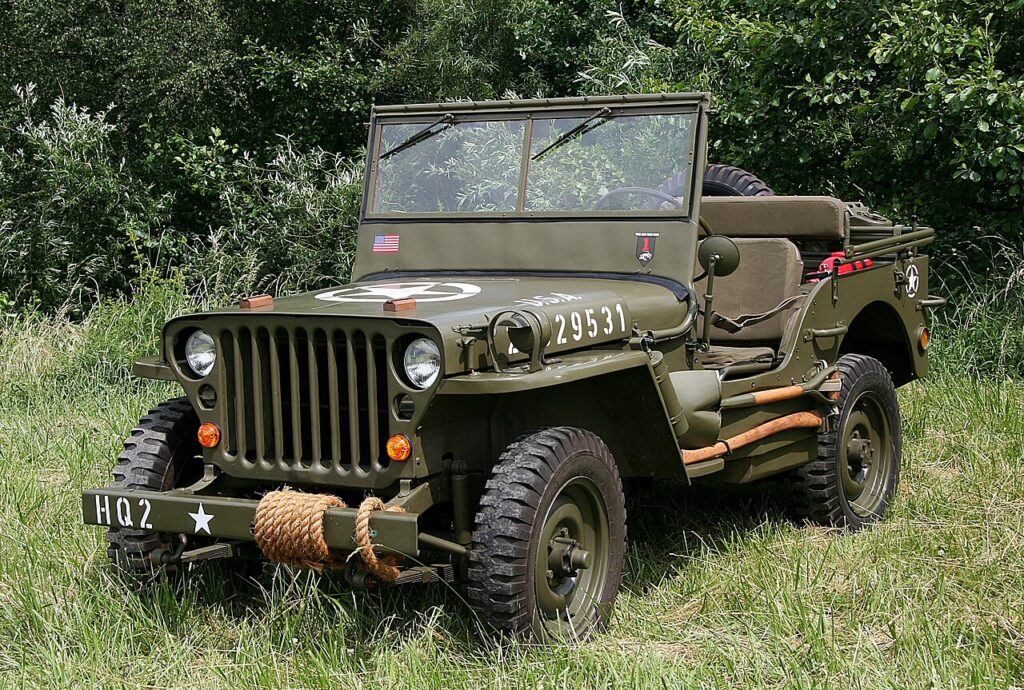
The military Willys MB was introduced as the U.S. Army’s standard lightweight four-wheel drive vehicle in 1941, and production continued through WWII until 1945. Its rarity lies in age, military provenance, and fewer original examples remaining. Market values for original or well-restored units often range from $50,000 to $150,000+, with documentation and provenance contributing significantly. It’s arguably the vehicle that defined off-road capability and 4×4 culture, making it foundational for Jeep’s history. Its simplicity, rugged build and wartime role give it strong collector significance.
When considering one, check for correct wartime markings, matching serial numbers, original body and correct drivetrain. Many units have been modified for civilian use, which may reduce collector appeal. Parts availability and authenticity vary, so condition and originality matter a great deal. Because of the vehicle’s history, documentation of service and restoration is key. For serious off-road or military vehicle collectors, the Willys MB is a cornerstone piece.
1945-1949 Jeep CJ-2A
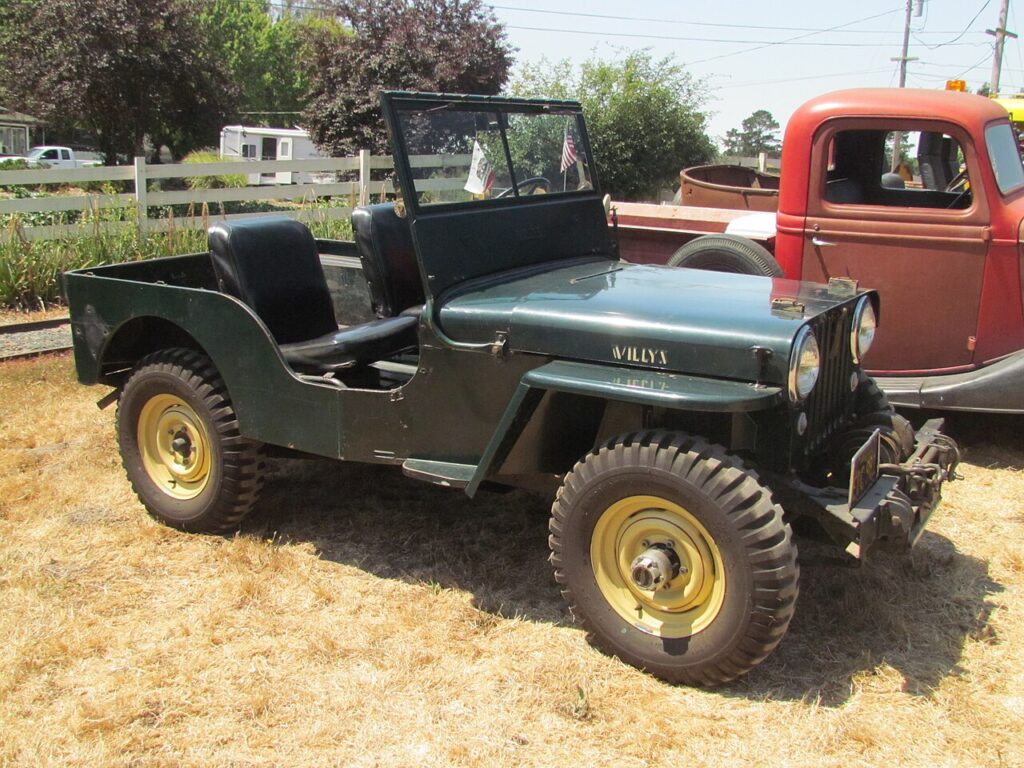
Following WWII, the CJ-2A was introduced in 1945 for the civilian market, retaining the Willys military lineage and bringing four-wheel drive to general users. It is rare today because early production numbers were limited compared to later models and many were used in farms or rugged conditions. Values for well-kept examples can be in the $25,000 to $50,000 range, depending on condition and originality. It holds importance in off-road history as one of the first mass-market civilian 4WD vehicles. Its simplicity and versatility make it a classic piece of Jeep heritage.
Important inspection points include verifying original flat-fender body, correct L134 engine or early onward, wheelbase, and condition of frame and axles. Many were modified with later parts, which can reduce value amongst purists. Restoration can be challenging because early Jeep parts are fewer and may require fabrication. When one is found in good shape, it’s both a historical piece and an enjoyable off-road rig. For fans of Jeep’s earliest civilian iterations, the CJ-2A is a smart pick.
1951-1956 Jeep Austin Champ

Although not produced by Jeep in the U.S., the Austin Champ in Britain was a military off-road 4WD vehicle produced in limited numbers after WWII. Its rarity comes from low production numbers, European military deployment, and very few civilian conversions surviving. Collectors value the model because it shows how the Jeep concept influenced global off-road vehicle design. Value estimates can be $30,000 to $60,000 or more for unmodified, documented examples. The model links Jeep heritage to global 4×4 history.
Condition checks should look at matching engine (Rolls-Royce-Bristol 2.5L engine in many units), correct military equipment, and frame-axle condition. Parts may be scarce, given its small production footprint and unique design. Authentic restoration and military provenance increase value significantly. For the off-road history enthusiast who appreciates international connections, the Austin Champ offers a rare pathway.
1971 Jeep C101 Jeepster Hurst Special
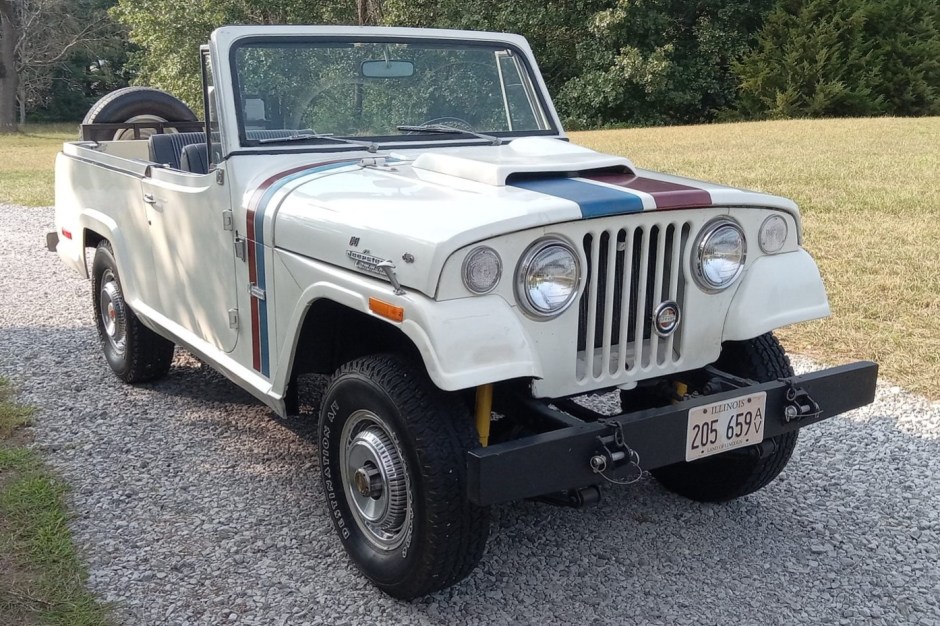
Released as a limited edition in 1971 under AMC’s ownership of Jeep, the Hurst Special version of the C101 Jeepster featured unique styling cues like stripes, Hurst shifter, upgraded interior and only around 100 units produced. The rarity is extreme because of the low production and special equipment. These units are currently estimated at $40,000 to $70,000 for well-preserved examples with complete history. As a transitional Jeep model blending performance cues and off-road capability, it has strong appeal. Its place in Jeep lore as a special run gives it collector credibility.
When evaluating one, checking that the correct badging, original paint code and Hurst interior features are present is key. Since many were modified or have lost parts, completeness matters. Documentation of original sale and option sheet significantly raises value. Because parts are less common for the special run, upkeep may require specialist sourcing. For a Jeep enthusiast looking specifically for rare factory editions, this model is a highlight.
This article originally appeared on Avocadu.
